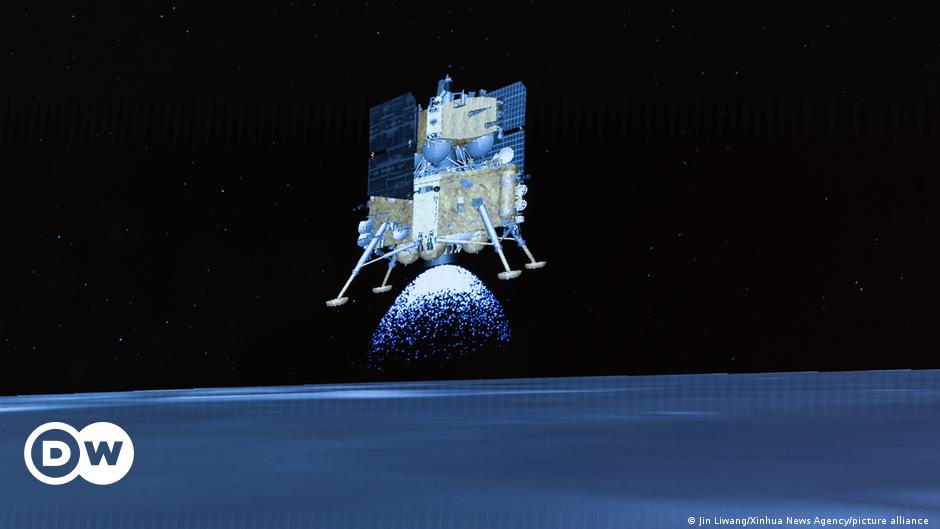China lands its spacecraft on the far side of the Moon – DW – 06/03/2024

This Sunday (05/02/2024), a Chinese spacecraft landed on the far side of the Moon to collect soil and rock samples that could provide information about the differences between this less explored region and the better known visible side.
The lunar lander touched down at 6:23 a.m. (Beijing time) in a huge crater known as the South Pole-Aitken Basin, according to China’s National Space Administration.
The mission is the sixth of the Chang’e lunar exploration program, named after the Chinese moon goddess. This is the second ship designed to deliver samples, after Chang’e 5, which did so in sight in 2020.
Growing rivalry with the United States
The lunar program is part of a growing rivalry with the United States, which remains the leader in space exploration, and other countries such as Japan and India. China has launched its own space station into orbit and regularly sends crews there.
The emerging world power aims to put a man on the moon before 2030, making it the second country after the United States to do so. The United States plans to send astronauts to the moon again for the first time in more than 50 years, although NASA pushed back the planned date to 2026 earlier this year.
US efforts to use privately owned rockets to launch spacecraft have been repeatedly delayed. Last-minute computer problems prevented the planned launch of Boeing’s first astronaut flight on Saturday.
A Japanese billionaire canceled his plan to orbit the moon on Saturday due to uncertainty over SpaceX’s mega-rocket development. NASA plans to use the rocket to send astronauts to the Moon.
Sample return probe
On China’s current mission, the lander will use a mechanical arm and drill to collect up to 2 kilograms (4.4 pounds) of surface and subsurface material in about two days.
An elevator on top of the lander will then carry the samples in a vacuum-sealed metal container to another lander orbiting the Moon.
The container will be transferred to a recovery capsule that will return to Earth in the deserts of China’s Inner Mongolia region around June 25.
Missions to the far side of the Moon are more difficult because it does not face Earth and requires a relay satellite to maintain communications. The terrain is also more rugged, with fewer flat areas to land on.
The South Pole-Aitken Basin, an impact crater formed more than 4 billion years ago, is 13 kilometers deep and 2,500 kilometers in diameter, according to China’s Xinhua News Agency.
According to Xinhua, it is the largest and oldest crater of its kind on the Moon, so it may provide the oldest information about it. It adds that the huge impact could have released materials from deep within.
SEVERAL (AP, CNSA, Xinhua)
